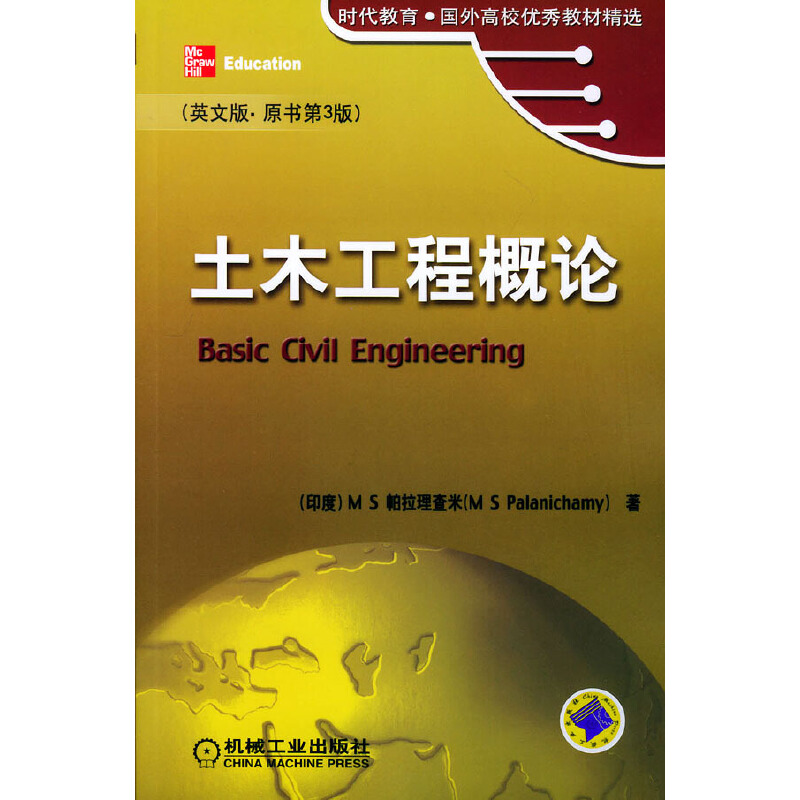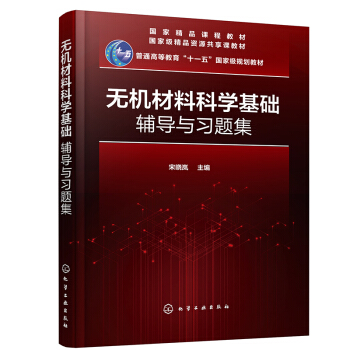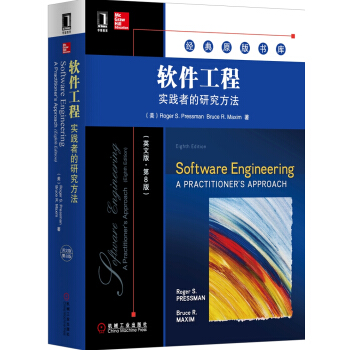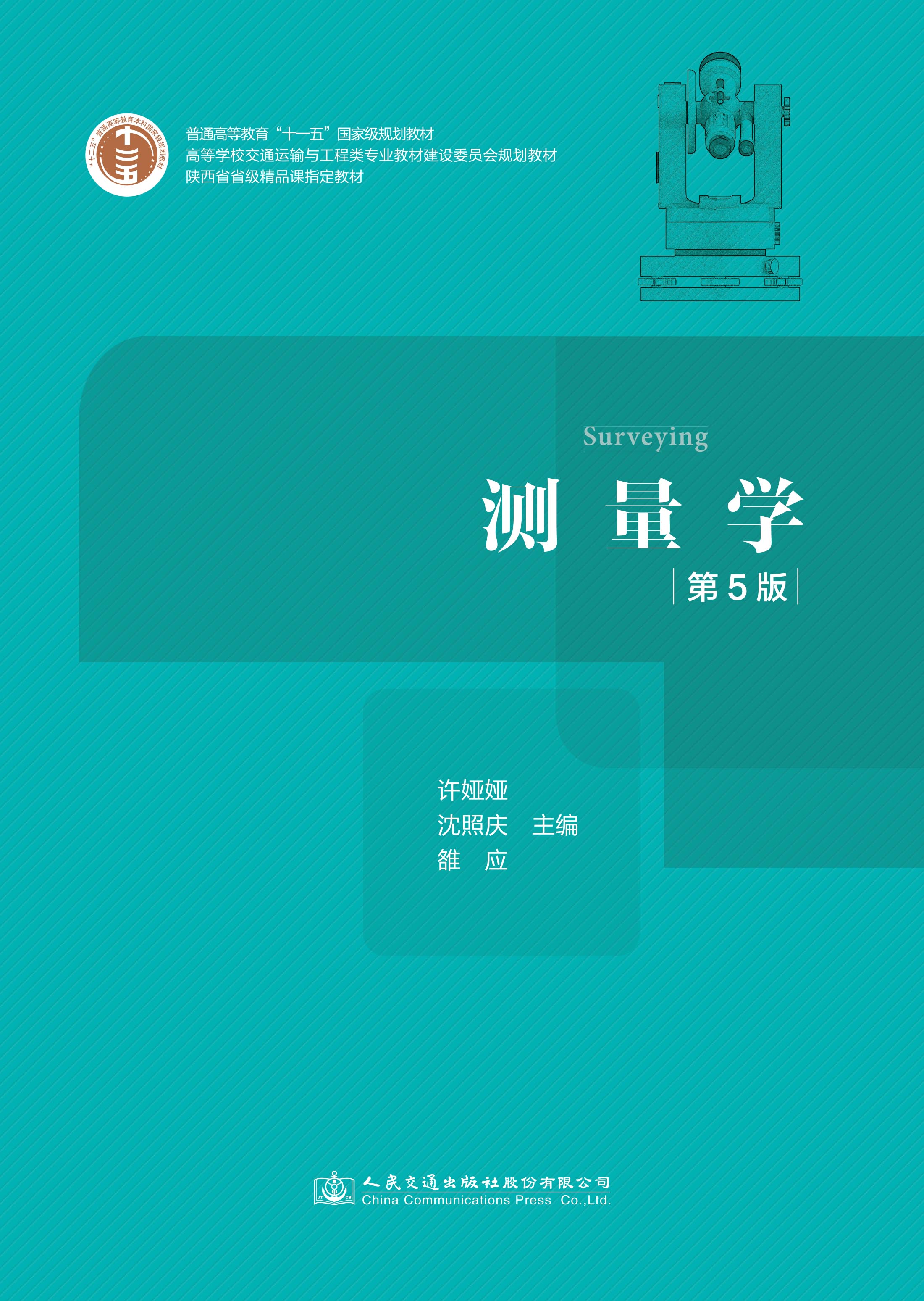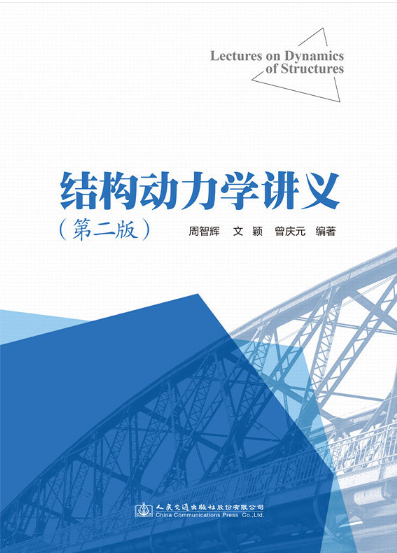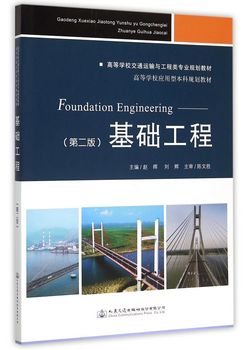材料科学与工程基础(配光盘)(影印版) / 国外大学优秀教材·材料科学与工程系列
¥58.00定价
作者: Askeland,D.R.
出版时间:2015-08
出版社:清华大学出版社
- 清华大学出版社
- 9787302099819
- 1-10
- 189363
- 16开
- 2015-08
- 工学
- 材料科学与工程
- TB301
- 材料类
- 高职
内容简介
《材料科学与工程基础》是The Scienceand Engineering of Materials第4版的节选本。原书曾是美国工学院里所开设的“材料科学与工程”课程所用的教科书中为流行的一本,原书内容分为五个部分,《材料科学与工程基础》则选取了其中的前三个部分并作了部分的改写和补充:一、原子结构、排列和缺陷以及原子运动;二、材料的力学性能和微观结构控制;三、主要的工程材料。
《材料科学与工程基础》条理有序,内容丰富,浅显易懂,十分适合于一般工学院的材料导论或概论类课程。同时,作为节选本,它更适合于材料专业的初级课程,特别是材料系本科生的“金属材料导论”类的课程。《材料科学与工程基础》所给出的例题和大量的作业思考题,不仅涉及面广,而且重点突出,切题实用,并包括了案例设计等开放式的实践内容。
《材料科学与工程基础》作者Donald Askeland博士所在的University of Missouri-Rolla以其在金属冶金方面的建树而在美国著称,而作者本人则是这个领域十分著名的专家。他在《材料科学与工程基础》里不仅对金属材料部分的介绍有独到的见解和非常精彩的阐述,而且对陶瓷、玻璃、高分子、复合材料等领域也作了极为详尽的描述。《材料科学与工程基础》引入大量现代科技新发展的成果,比如高温超导体、新一代数字芯片技术、高密度磁记录等,这对开拓学生眼界、熟悉相关领域动态、掌握现代工业发展有着极为积极的意义。
《材料科学与工程基础》包含一张免费的CD-ROM,提供相关的教学软件、教案补充和网址等文件。
《材料科学与工程基础》条理有序,内容丰富,浅显易懂,十分适合于一般工学院的材料导论或概论类课程。同时,作为节选本,它更适合于材料专业的初级课程,特别是材料系本科生的“金属材料导论”类的课程。《材料科学与工程基础》所给出的例题和大量的作业思考题,不仅涉及面广,而且重点突出,切题实用,并包括了案例设计等开放式的实践内容。
《材料科学与工程基础》作者Donald Askeland博士所在的University of Missouri-Rolla以其在金属冶金方面的建树而在美国著称,而作者本人则是这个领域十分著名的专家。他在《材料科学与工程基础》里不仅对金属材料部分的介绍有独到的见解和非常精彩的阐述,而且对陶瓷、玻璃、高分子、复合材料等领域也作了极为详尽的描述。《材料科学与工程基础》引入大量现代科技新发展的成果,比如高温超导体、新一代数字芯片技术、高密度磁记录等,这对开拓学生眼界、熟悉相关领域动态、掌握现代工业发展有着极为积极的意义。
《材料科学与工程基础》包含一张免费的CD-ROM,提供相关的教学软件、教案补充和网址等文件。
目录
Preface
Rbout the Ruthors
Chapter 1 Introduction to Materials Science and Engineering
Intrduction
1.1 What is Materials Science and Engineering
1.2 Classification of Materials
1.3 Functional Classification of Materials
1.4 Classification of Materials Based on Structure
1.5 Environmental and Other Effects
1.6 Materials Design and Selection
SUMMRRY GLOSSRRY PROBLEMS
Chapter 2 Rtomic Structure
Introduction
2.1 The Structure of Materials:Technological Relevance
2.2 The Structure of the Atom
2.3 The Electronic Structure of the Atom
2.4 The Periodic Table
2.5 Atomic Bonding
2.6 Binding Energy and Interatomic Spacing
SUMMRRY GLOSSRRY PROBLEMS
Chapter 3 Rtomic and Ionic Rrrangements
Introduction
3.1 Short-Range Order versus Long-Range Order
3.2 Amorphous Materials:Principles and TechnologicalApplications
3.3 Lattice,Unit Cells,Basis,and Crystal Structures
3.4 Allotropic or Polymorphic Transformations
3.5 Points,Directions,and Planes in the Unit Cell
3.6 Intrstitial Sites
3.7 Crystal Structures of lonic Materials
3.8 Covalent Structures
3.9 Diffaction Techniques for Crystal Structure Analysis
SUMMRRY GLOSSRRY PROBLEMS
Chapter 4 Imperfections in the Rtomic and lonic Rrrangements
Introduction
4.1 Point Defects
4.2 Other Point Defects
4.3 Dislocations
4.4 Significance of Dislocations
4.5 Schmid's Law
4.6 Influence of Crystal Structure
4.7 Surface Defects
4.8 Importance of Defects
SUMMRRY GLOSSRRY PROBLEMS
Chapter 5 Rtom and lon Movements in Materials
Introduction
5.1 Applications of Diffusion
5.2 Stability of Atoms and lons
5.3 Mechanisms for Diffusion
5.4 Activation Energy for Diffusion
5.5 Rate of Diffusion(Fick's First Law)
5.6 Factora Affecting Diffusion
5.7 Permeability of Polymers
5.8 Composition Profile(Fick's Second Law)
5.9 Diffusion and Materials Processing
SUMMRRY GLOSSRRY PROBLEMS
Cahpter 6 Mechanical Properies:Fundamentals andTensile,Hardness,and Impact Testing
Introduction
6.1 Technological Significance
6.2 Terminology for Mechanical Properties
6.3 The Tensile Test: Use of the Stress-Strain Diagram
6.4 Properties Obtained from the Tensile Test
6.5 True Stress and True Strain
6.6 The Bend Test for Brittle Materials
6.7 Hardness of Materials
6.8 Strain Rate Effects and Impact Behavior
6.9 Properties Obtained from the Impact Test
Chapter 7 Fracture Mechanics,Fatigue,and Creep Behavior
Chapter 8 Strain Hardening and Rnnealing
Chapter 9 Principles and Rpplications of Soldfication
Chapter 10 Solid Solutions and Phase Equilibrium
Chapter 11 Dispersion Strengthening and Eutectic PhaseDiagrams
Chapter 12 Dispersion Strengthening bu Phase Transformations andHeat Treatment
Chapter 13 Heat Treatment of Steels and Cast Lrons
Chapter 14 Nonferrous Allous
Chapter 15 Ceramic Materials
Chapter 16 Polumers
Chapter 17 Composites:Teamwork and Sunergu in Materials
Appendix A:Selected Phusical Properties of Metals
Appendix B:The Atomic and lonic Radii of Selected Elements
Rnswers to Selected Problems
Index
Rbout the Ruthors
Chapter 1 Introduction to Materials Science and Engineering
Intrduction
1.1 What is Materials Science and Engineering
1.2 Classification of Materials
1.3 Functional Classification of Materials
1.4 Classification of Materials Based on Structure
1.5 Environmental and Other Effects
1.6 Materials Design and Selection
SUMMRRY GLOSSRRY PROBLEMS
Chapter 2 Rtomic Structure
Introduction
2.1 The Structure of Materials:Technological Relevance
2.2 The Structure of the Atom
2.3 The Electronic Structure of the Atom
2.4 The Periodic Table
2.5 Atomic Bonding
2.6 Binding Energy and Interatomic Spacing
SUMMRRY GLOSSRRY PROBLEMS
Chapter 3 Rtomic and Ionic Rrrangements
Introduction
3.1 Short-Range Order versus Long-Range Order
3.2 Amorphous Materials:Principles and TechnologicalApplications
3.3 Lattice,Unit Cells,Basis,and Crystal Structures
3.4 Allotropic or Polymorphic Transformations
3.5 Points,Directions,and Planes in the Unit Cell
3.6 Intrstitial Sites
3.7 Crystal Structures of lonic Materials
3.8 Covalent Structures
3.9 Diffaction Techniques for Crystal Structure Analysis
SUMMRRY GLOSSRRY PROBLEMS
Chapter 4 Imperfections in the Rtomic and lonic Rrrangements
Introduction
4.1 Point Defects
4.2 Other Point Defects
4.3 Dislocations
4.4 Significance of Dislocations
4.5 Schmid's Law
4.6 Influence of Crystal Structure
4.7 Surface Defects
4.8 Importance of Defects
SUMMRRY GLOSSRRY PROBLEMS
Chapter 5 Rtom and lon Movements in Materials
Introduction
5.1 Applications of Diffusion
5.2 Stability of Atoms and lons
5.3 Mechanisms for Diffusion
5.4 Activation Energy for Diffusion
5.5 Rate of Diffusion(Fick's First Law)
5.6 Factora Affecting Diffusion
5.7 Permeability of Polymers
5.8 Composition Profile(Fick's Second Law)
5.9 Diffusion and Materials Processing
SUMMRRY GLOSSRRY PROBLEMS
Cahpter 6 Mechanical Properies:Fundamentals andTensile,Hardness,and Impact Testing
Introduction
6.1 Technological Significance
6.2 Terminology for Mechanical Properties
6.3 The Tensile Test: Use of the Stress-Strain Diagram
6.4 Properties Obtained from the Tensile Test
6.5 True Stress and True Strain
6.6 The Bend Test for Brittle Materials
6.7 Hardness of Materials
6.8 Strain Rate Effects and Impact Behavior
6.9 Properties Obtained from the Impact Test
Chapter 7 Fracture Mechanics,Fatigue,and Creep Behavior
Chapter 8 Strain Hardening and Rnnealing
Chapter 9 Principles and Rpplications of Soldfication
Chapter 10 Solid Solutions and Phase Equilibrium
Chapter 11 Dispersion Strengthening and Eutectic PhaseDiagrams
Chapter 12 Dispersion Strengthening bu Phase Transformations andHeat Treatment
Chapter 13 Heat Treatment of Steels and Cast Lrons
Chapter 14 Nonferrous Allous
Chapter 15 Ceramic Materials
Chapter 16 Polumers
Chapter 17 Composites:Teamwork and Sunergu in Materials
Appendix A:Selected Phusical Properties of Metals
Appendix B:The Atomic and lonic Radii of Selected Elements
Rnswers to Selected Problems
Index


